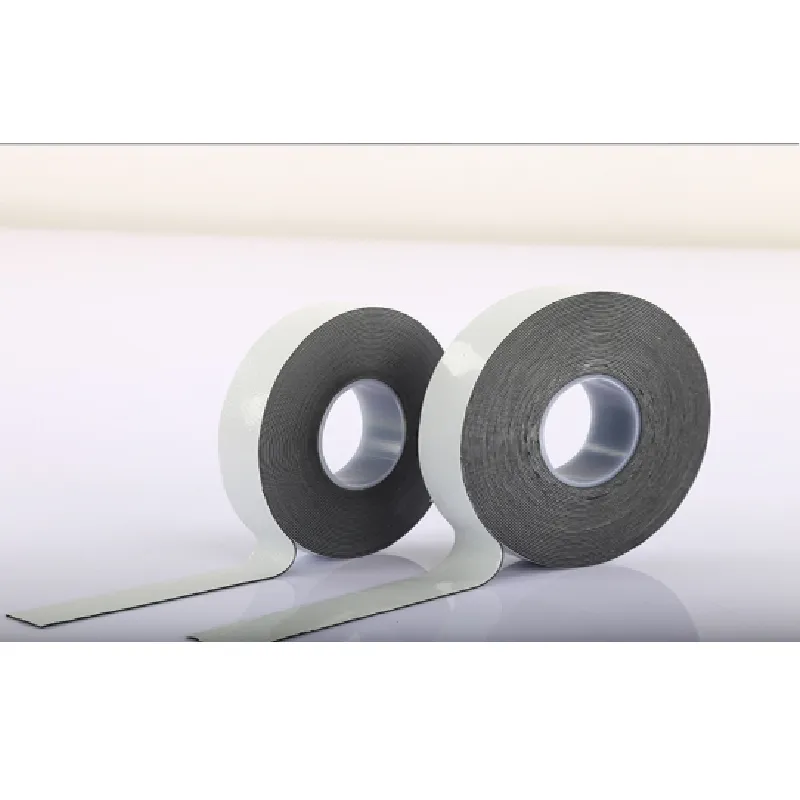Understanding Self-Amalgamating Rubber Tape A Comprehensive Guide
Self-amalgamating rubber tape, commonly referred to as self-fusing tape, is an innovative adhesive solution that is gaining acclaim in various sectors, including electrical, plumbing, and automotive industries. This specialized tape is designed to bond with itself when wrapped around an object, creating a watertight, airtight, and flexible seal. The black version of this tape, in particular, is popular due to its versatility, strong performance, and aesthetic appeal.
What is Self-Amalgamating Rubber Tape?
Self-amalgamating rubber tape is made from high-quality, synthetic rubber and does not require any adhesive backing. Instead, it relies on the unique property of the rubber material to fuse to itself when overlapped. This characteristic allows the tape to conform to the shape of the surface it is applied to, providing an effective seal against moisture, dirt, and other environmental contaminants.
Key Properties and Benefits
1. Waterproof and Weather-Resistant One of the key features of self-amalgamating rubber tape is its ability to create a strong, waterproof seal. This makes it ideal for outdoor applications and areas exposed to moisture.
2. Temperature Resistance This tape can typically withstand a range of temperatures, making it suitable for both hot and cold environments. It maintains its flexibility and integrity, ensuring long-lasting performance.
3. Electrical Insulation The rubber material is an excellent insulator, making this tape popular in electrical applications. It can be used to cover connections, repair wires, and prevent short circuits.
4. Chemical Resistance Self-amalgamating rubber tape is resistant to various chemicals, oils, and solvents, enhancing its applicability in industrial settings where exposure to such substances is common.
5. Ease of Use Applying the tape is straightforward; simply stretch and wrap it around the desired object. The tape will fuse upon contact without requiring heat or additional adhesives.
self amalgamating rubber tape black

Applications
The versatility of black self-amalgamating rubber tape allows it to be employed in a wide variety of applications
- Electrical Repairs It effectively secures and insulates electrical connections and wires, protecting them from moisture and damage. Electricians appreciate its utility for both temporary and permanent fixes.
- Plumbing It can be used to seal leaks in pipes and hoses, providing a quick and efficient remedy for common plumbing issues. The tape conforms well to different shapes and sizes, ensuring a tight seal.
- Automotive Uses Car enthusiasts and professionals use this tape for a range of automotive applications, including wrapping wires, sealing hoses, and securing components. Its durability and resistance to extreme conditions make it ideal for vehicles.
- General Repairs Beyond specialized applications, self-amalgamating rubber tape serves well in general repair tasks around the home, such as fixing garden tools, ladders, and household items needing a sturdy, temporary fix.
Limitations
While self-amalgamating rubber tape is effective, it is essential to consider its limitations. The tape may not bond well to surfaces that are heavily contaminated or greasy. Proper surface preparation is crucial for ensuring a good seal. Additionally, while it offers a robust sealing capability, it may not be suitable for high-pressure applications where significant force is involved.
Conclusion
In summary, self-amalgamating rubber tape, particularly the black variety, represents a reliable and versatile solution for various sealing and insulating needs. Its unique self-fusing properties, combined with its waterproof, weather-resistant, and insulating capabilities, make it an invaluable tool in many industries. Whether you are an electrician, plumber, automotive technician, or simply a DIY enthusiast, this tape can provide effective results for a wide range of applications. Understanding its features, benefits, and appropriate uses will help maximize its performance and ensure successful repairs and installations.
-
XIANGFAN Rubber Tape-Ultimate Solutions for All Your Insulation NeedsNewsJun.24,2025
-
XIANGFAN Rubber Tape-Protection for Industrial and Residential ApplicationsNewsJun.24,2025
-
XIANGFAN Rubber Tape: Superior Safety and Sealing for Demanding EnvironmentsNewsJun.24,2025
-
XIANGFAN Rubber Tape: Reliable Solutions for Every Electrical ChallengeNewsJun.24,2025
-
XIANGFAN Electrical & Industrial Tape: Powering Reliability Across IndustriesNewsJun.24,2025
-
XIANGFAN Electrical & Industrial Tape: Excellence in Every ApplicationNewsJun.24,2025
